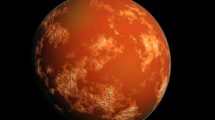 According to the Emirates Institution for Advanced Science and Technology (EIAST), first communication with DubaiSat-2 was established 90 minutes after separation from the Dnepr rocket on November 21, 2013. The satellite’s mission-critical telescope operated successfully and captured the first image just 24 hours after launch, says EIAST. The area captured was of Seer Bani Yas island in Abu Dhabi.
According to the Emirates Institution for Advanced Science and Technology (EIAST), first communication with DubaiSat-2 was established 90 minutes after separation from the Dnepr rocket on November 21, 2013. The satellite’s mission-critical telescope operated successfully and captured the first image just 24 hours after launch, says EIAST. The area captured was of Seer Bani Yas island in Abu Dhabi.
DubaiSat-2 provides 1m resolution in the panchromatic band and 4m multispectral, as well as a colour 1m product, the imaging swath is 12 km and DubaiSat-2 has the ability to image and download more than 18,000sq.km a day from its Dubai Ground station based in Al Khawaneej.
Salem Al Marri, Assistant Director General for Scientific and Technical Affairs at EIAST, says: “The launch of DubaiSat-2 marks a milestone for EIAST; our team has participated in the design and development of 50% of this mission and it has taken over five years of development. It is a very proud moment for us to see the results of all the hard work and dedication of the team.
“The satellite is the culmination of joint efforts between the UAE and the South Korean development team, and throughout the long mission development time in Korea, our team has done its best to lift the UAE flag high into space and make sure we continue developing the UAE and its young engineers,” says Al Marri.
 Since its launch, DubaiSat-2 has orbited the globe, capturing images from all five continents, says Omran Sharaf, EIAST’s Director of Space Image Processing and Analysis Department.
Since its launch, DubaiSat-2 has orbited the globe, capturing images from all five continents, says Omran Sharaf, EIAST’s Director of Space Image Processing and Analysis Department.
“The satellite has imaged over 833 images, which is equivalent to 120,000sq.km. These images will be utilised in many [ways] such as in monitoring development projects, urban planning, environmental monitoring, and in different value-added products developed by EIAST to support decision makers in different sectors. We plan to work with all government departments to ensure maximum usage of these images for the benefit of UAE and its people,” says Sharaf.
Commenting on the operation of the satellite, Mohammed Alharmi, Director of Ground Services Department, adds: “The satellite operations team at EIAST was successful in stabilising the satellite and testing all subsystems. The first contact with the satellite was established 90 minutes after launch, and the team used two different ground stations to track the satellite and monitor its condition. Once we made sure that the system was stable, we started imaging different areas around the globe to test the camera and calibrate the sensors”
EIAST has released images from DubaiSat-2 taken from all over the world in 1m resolution, the areas imaged include the Golden Gate bridge in San Francisco, Tokyo Bay, The Coliseum in Rome and an image of Burj Khalifa taken just before National Day on December 1.
DubaiSat-2 weighs 300kg and is 2m in height and 1m in width. It is equipped with an electrical propulsion system that allows the control of its altitude above ground level and modifies it automatically in the event of any deviation from the orbit through a set of predetermined and saved commands sent from the control station. The new satellite is equipped with innovative technology to enhance manoeuvring capability and increase agility by 300% as compared to Dubai Sat-1.
DubaiSat-2 was launched into space from the Yasny Launch Base in Russia on board the Dnepr space launch vehicle on November 21, 2013.












Add Comment